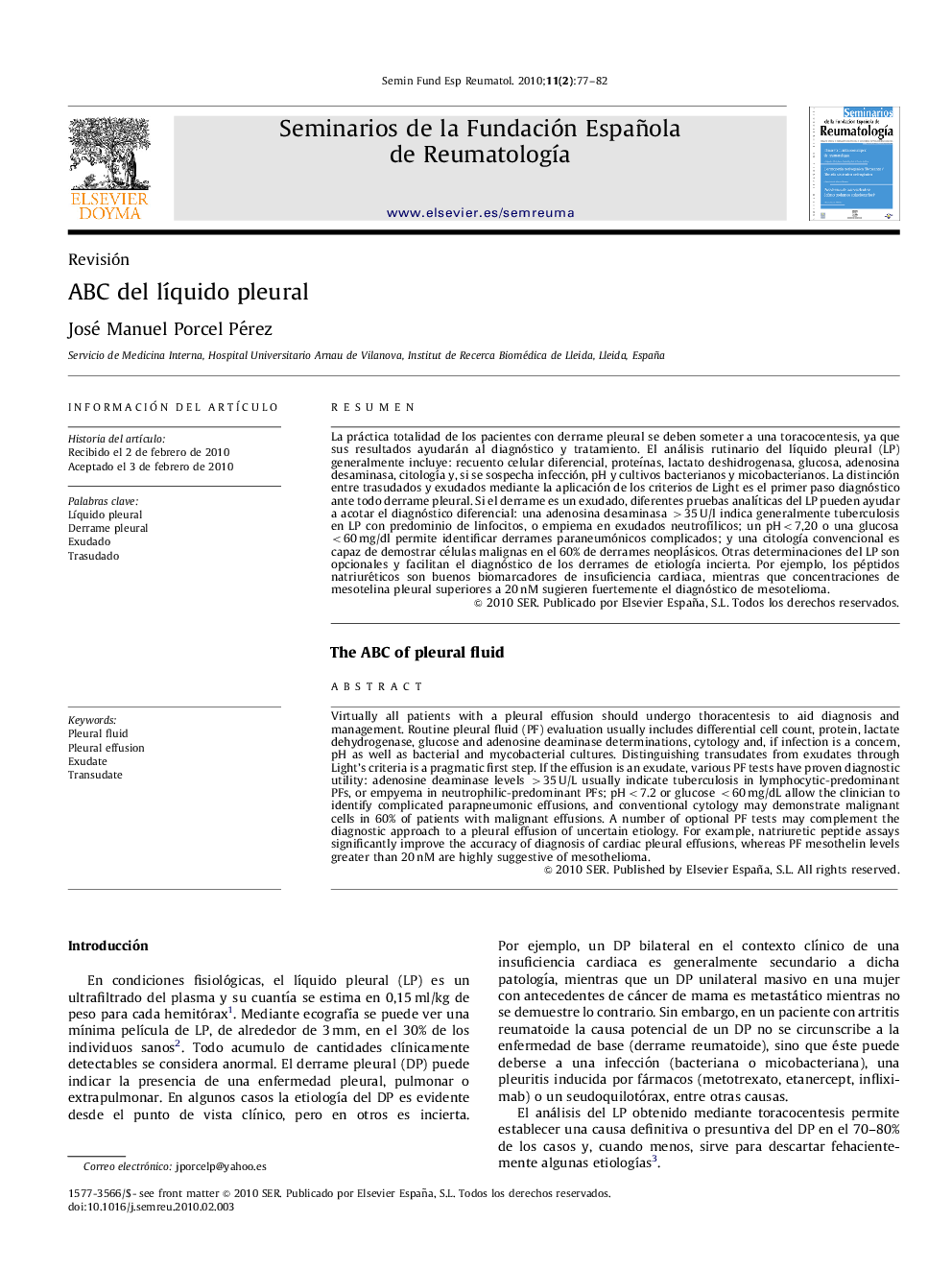| Article ID | Journal | Published Year | Pages | File Type |
|---|---|---|---|---|
| 3391133 | Seminarios de la Fundación Española de Reumatología | 2010 | 6 Pages |
Abstract
Virtually all patients with a pleural effusion should undergo thoracentesis to aid diagnosis and management. Routine pleural fluid (PF) evaluation usually includes differential cell count, protein, lactate dehydrogenase, glucose and adenosine deaminase determinations, cytology and, if infection is a concern, pH as well as bacterial and mycobacterial cultures. Distinguishing transudates from exudates through Light's criteria is a pragmatic first step. If the effusion is an exudate, various PF tests have proven diagnostic utility: adenosine deaminase levels >35Â U/L usually indicate tuberculosis in lymphocytic-predominant PFs, or empyema in neutrophilic-predominant PFs; pH<7.2 or glucose <60Â mg/dL allow the clinician to identify complicated parapneumonic effusions, and conventional cytology may demonstrate malignant cells in 60% of patients with malignant effusions. A number of optional PF tests may complement the diagnostic approach to a pleural effusion of uncertain etiology. For example, natriuretic peptide assays significantly improve the accuracy of diagnosis of cardiac pleural effusions, whereas PF mesothelin levels greater than 20Â nM are highly suggestive of mesothelioma.
Keywords
Related Topics
Health Sciences
Medicine and Dentistry
Immunology, Allergology and Rheumatology
Authors
José Manuel Porcel Pérez,
